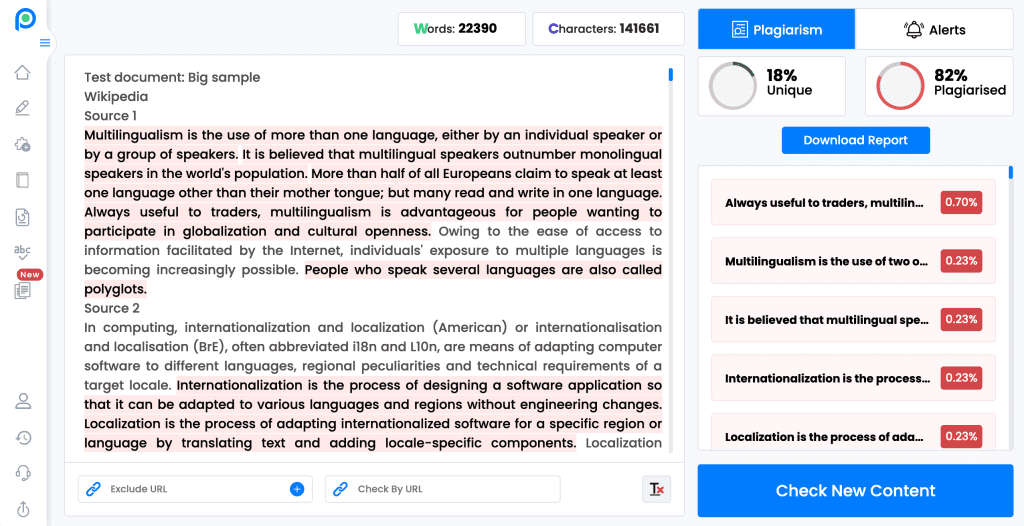The internet has made it easy for anyone with a computer and an internet connection to share information. Unfortunately, this also means that there is an increased risk of plagiarism. If you’re not sure if someone has copied your work without permission, here are five ways to detect plagiarism which you can use for free:
1. Check for Similar Words and Phrases
If you notice that a large number of the words and phrases in a particular piece of writing are similar to those in another source, it might be evidence that the content has been copied without permission.
2. Check for Mistakes
If you find any mistakes in a piece of writing that appear to have been made without proper research, it could be an indication that the content has been copied from another source.
3. Compare Sentences and Paragraphs
If you notice that a large number of sentences in a particular piece of writing are similar in structure or syntax to those found in other sources, it could be evidence that the content has been copied without permission.
4. Check for Plagiarism Quotations
If you find instances where specific passages from other sources have been reproduced word-for-word as part of your own writing
Types of Plagiarism
defintion
There are a number of different ways to detect plagiarism. One of the most common ways is to see if the sources used in your paper are properly cited. This means that you should include information about the author, title, and publication date of the source you are using.
Another way to detect plagiarism is to compare your work word for word with a source that you have permission to use. This can be done by using a plagiarism detection software program or by comparing your work to a sample paper that has been written properly.
If you think that somebody may have copied your work, it is important to contact them and ask for permission to use their source material. If they do not want you to use their source material, then you may need to find another way to present your ideas.
How to Detect Plagiarism in Your Academic Papers
- There are a number of ways to detect plagiarism in your academic papers. One way is to use the online plagiarism detection tool, which is free to use.
- Another way is to use the plagiarism detection software that is available in many academic databases. This software can be expensive, but it is worth it if you want to ensure that your papers are free of plagiarism.
- The last method of detecting plagiarism is to use a content analysis tool, which is also available for free. This tool can help you to identify areas in your papers that may be copied from other sources.
How to Detect Plagiarism in Your Website
1. How to Detect Plagiarism in Your Website
One way to detect plagiarism in your website is to use a plagiarism detection tool. These tools can be used free of charge, and they are able to detect many different types of plagiarism.
Some of the most common plagiarism detection tools are the Copyscape and the Turnitin tools. These tools can be used to detect plagiarism in your website content, your citations, and your bibliography. They also have features that allow you to track the progress of your work as you make changes. This makes it easier to find and address any instances of plagiarism.
other tools for plagirism check prepostseo.com, 1text.com.
2. How to Detect Plagiarism in Your Paper
Another way to detect plagiarism in your paper is to use the Purdue OWL. This tool is available free of charge, and it can be used to detect plagiarism in your citations and bibliography as well as your paper content. It also has features that allow you to track the progress of your work as you make changes. This makes it easier to find and address any instances of plagiarism.
If you are concerned about whether or not your work has been copied without permission, then using
How to Detect Plagiarism in Your Textbooks
One way to detect plagiarism in your textbooks is to use a plagiarism detection tool. This tool can help you find where in your text book you have copied from another source. You can also use plagiarism detection software to compare your own work with what is found on the internet.
Another way to detect plagiarism is to use the “cut and paste” method. This method involves copying small sections of text and comparing them to other sources. You should also check the grammar of your work and make sure it is correctly written.
Finally, you can also ask your classmates or friends if they know of any passages that you may have copied from another source. If they are unable to point out the passage, then it may be a sign that you have copied it from a source without properly citing it.
Conclusion
plagiarism is a problem that affects everyone, but for some people it can be extremely damaging. If you’re looking to stay ahead of the curve and avoid plagiarizing in your work, you’re in luck; this article provides five different ways to detect plagiarism which are free to use. Which one will you try first
